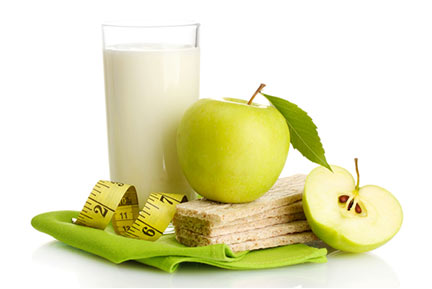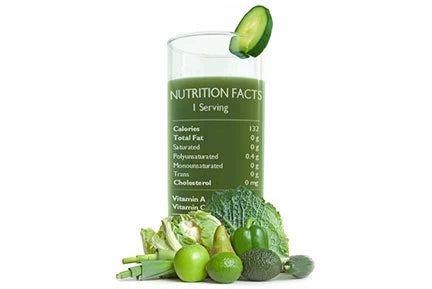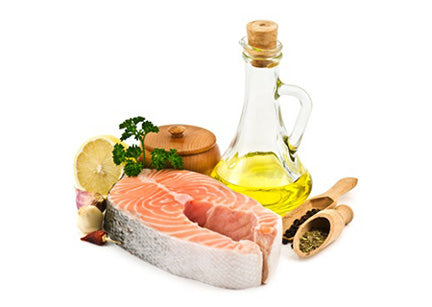
What are the best sources of Vitamin C?
Vitamin C can be produced by most of the plants and even animals. However, many fruit and vegetable eating animals lost their ability to create vitamin C by the liver, including humans. It happened because humans started getting enough of vitamin C through diet and internal production was not needed.
Since the human body cannot produce vitamin C, it is at the increased risk of its deficiency. This risked also increased due to changes in the dietary pattern over the years, especially in the post-industrial age era.
In Paleo age, human ancestors were hunters and gatherers, they cleverly mixed animal products with berries, roots, herbs, and other sources of vitamins C. However, with technological progress, humans reduced consumption of freshly grown, non-farmed, products.
Problem with vitamin C is its low reserves in the human body. Some individuals may start suffering from its deficiency if they consume low vitamin C products just for a month. Since vitamin C is needed for so many metabolic processes; its deficiency may result in a higher risk of various disease conditions.
 Natural or synthetic?
Natural or synthetic?
Most of the supplements nowadays used synthetically created Vitamin C. Vitamin C or ascorbic acid was first synthesized way back in the 1930s. Therefore, it is logical to ask, what kind of it is better?
Vitamin C is present in various fruits and vegetables. However, natural sources are also abundant in many other phytochemicals, like bioflavonoids. It is well known that the presence of different organic and inorganic compounds affects the bioavailability and efficacy of vitamins.
Comparison studies in animals show that natural vitamin C have slightly better bioavailability than the synthetic one. However, similar studies in human remain inconclusive. It means that there does not seem to be much difference, important is to have enough of vitamin C, whether synthetic or natural(1).
Comparison Stability of vitamin C differs in various sources. In some fruits and vegetables, it may decrease with storage, while in others there may not be much effect. Similarly, the process of ripening may also influence its concentration. Generally, vitamin C is higher in unripe fruits(2). Regretfully, most fruits are consumed in a ripe form. Thus the real content of vitamin C is much lower than stated.
Vitamin C is partially destroyed by cooking, but not entirely. In some cases, cooking may even help preserve vitamin C for longer, by destroying the enzymes in fruits and vegetables known to neutralize vitamin C over time(3) .
Most Another critical thing to know about vitamin C is its dose. When taking orally, up to 100 mg daily dose is quite good, though one may need a higher dose when living with its deficiency or some disease conditions.
However, very high doses of vitamin C do not work (whether natural or synthetic), as the body cannot absorb them. Thus, if a person takes 100 gm, 90% will be absorbed. But only 50% will be absorbed in a high dose of 1000 mg. This means that important is to take it regularly, and not once a while in high doses.
Liposomal encapsulation of vitamin C
Although both natural and synthetic vitamin C seems to work equally, but it is not possible to boost the intake of vitamin C by taking usual ascorbic acid or eating fruits.
Many health benefits of vitamin C like boosting immunity, protection from flu, and protection from cancer only happen at higher doses that are achievable by intravenous injection of the vitamin C. Intravenous route surely delivers much higher dose when compared to fruits or usual oral forms of ascorbic acid, but it is not the preferred route due to discomfort involved.
Researchers have found the way to deliver a high amount of vitamin C into the body, without the discomfort of the injection, by using a technique called liposomal encapsulation. It is a technique of covering vitamin C molecules with a bilayer of lipids. The intestine quickly absorbs these coated spheres, from where it enters lymph (path used by fats differ than the route of absorption used by other nutrients), and then to the blood and other organs. Unlike vitamin C from fruits, that is not fully absorbed and is delivered by the portal vein to the liver where it may lose its potency partially. Liposomal encapsulation is the only way to deliver the high doses of vitamin C comparable to injectable route(4) .
 Top natural best sources of vitamin C
Top natural best sources of vitamin C
Coming back to the primary topic of the article, let’s have a look at some of the best and most useful natural or dietary sources of vitamin C.
• Acerola. Some people wrongly think that natural best sources of vitamin C cannot provide mega-dosages of vitamins, and thus they opt for synthetically created analogs. But acerola can prove anyone wrong. One cup of acerola juice (242 g) contains a whopping 3800 mg of vitamin C, that is more than a single dose of any pill or supplement, Or a cup of raw acerola cherries can provide 1600 mg or more of it.
Acerola cherry or Malpighia emarginata is a small tree that is native to Central and South America, though it is also cultivated in other tropical countries. It is also rich in vitamin B1, B2, B3, B5, A, folate, and is abundant in bioflavonoids. It is an excellent source of calcium, manganese, and magnesium. It will also provide some dietary fiber and does not contain many sugars(5).
Though acerola sounds a good source of vitamin C, it has some limitations like most natural sources. It must be understood that due to issues of bioavailability, most of this vitamin C may not reach the bloodstream. And even the dose that enters the bloodstream is first delivered to the liver via the portal vein, and not to the organs that need vitamin C most.
• Oranges or orange juice. Citrus fruits are the best-known source of vitamin C, and their juices are loved by people. One can eat these fruits raw, extract juice, add them to various recipes. A cup of orange juice will provide 300 to 400 mg of vitamin C. That is three to four times more than recommended daily intake. Oranges also have other vitamins like riboflavin, thiamin, niacin, vitamin B6. Oranges are a good source of calcium and potassium. A cup of orange juice has about 600-700 mg of potassium, which may explain its blood pressure normalizing effect; it is useful for cardiovascular health, too(6).
• Guavas. Another fruit rich in vitamin C, with one cup containing 350 to 400 mg of vitamin C, along with almost 1000 IU of vitamin A, and about 700 mg of potassium. It is also a good source of dietary fiber, and due to its content of polyphenols, it has high antioxidant rating(7). Apart from the nutritive value, it is also regarded as medicinal. Guava pulp has anti-hyperglycemic and anti-neoplastic properties, and its seeds have antimicrobial properties(8).
• Grapefruit juice. A can of grapefruit juice (about 200 g) will provide 250 mg of vitamin C and 100 mg of potassium, along with a small amount of calcium.
• Bell pepper or sweet pepper. A vegetable that is native to Mexico and Central America and known widely grown in different parts of the world. It has now hundreds of varieties and comes in a number of colors. It is commonly consumed in cooked or raw form; it is added from salads to pizza toppings. One large bell pepper (about 200 g) may provide about 300 mg of vitamin C. Also, a good source of dietary fiber, vitamin K, B6, and thiamine.
• Tomatoes. A cup of juice provides about 170 mg of vitamin C, along with other vitamins and minerals. Tomato skin is abundant in lycopene a compound related to vitamin A, and it provides the typical red color to them. Lycopene has been subject to many medical studies at it is now regarded to be good for heart health; many help prevents certain types of cancers(9).
• Blackcurrants. Half a cup of blackcurrants is enough to fulfill the daily need of vitamin C, providing more than 100 mg of it. These fruits are also rich in flavonoids. Thus, they may help in cardiovascular condition, prevent cancer, and reduce the risk of neurodegenerative diseases.
• Thyme. A gram of thyme has three times more vitamin C than oranges and has the highest concentration of it among the culinary herbs. It is used as a spice in various countries. About an ounce of thyme (28 g) will provide 45 mg of vitamin C. Thyme is also a popular remedy for sore throat, respiratory infection, due to its anti-microbial properties(10). Oil of thyme has about 50% thymol, a compound that is used as an antiseptic in a popular mouthwash Listerine.
• Apple juice. A can of apple juice may provide close to 200 mg of vitamin C. Apple juice will have a higher content of vitamin C as it has added ascorbic acid in most of the cases. It is also rich in potassium, containing about 1 g of it.
• Parsley. It is native to the Mediterranean region, though now widely grown in various parts of the world. It is added to various foods in the Americas and Europe. In many countries, it is loved for its flavor. 100 g of parley contains about 130 mg of vitamin C. It is exceptionally high in Vitamin A and folate too. 100 g of it provides 1640 micrograms of vitamin K, which is almost 15 times its daily required intake. It is also rich in iron, calcium, magnesium, potassium, and zinc. Parsley is worth the status of superfood.
• Broccoli. Is another tasty and nutritious way to fulfill the need for vitamin C. 100 g of it is enough to meet daily needs, providing about 90 mg of the vitamin. Broccoli is high in dietary fiber, a good source of vegan protein. It is also an excellent source of vitamin K; other vitamins in it are B2, B6, folate. It is a good source of manganese.
• Pea. Commonly used in food preparation, loved for its taste, is also highly nutritious. A cup of peas may provide enough vitamin C for daily needs, along with a high amount of dietary fiber, proteins. It is also high in vitamin B1, B2, B3, B6, folate, vitamin K. Green peas are a good nutritional source of iron, magnesium, manganese, phosphorus, and zinc.
• Kiwifruit. It is a good source of vitamin C, potassium, dietary fiber, and folate. It also has many beneficial phytochemicals and thus may exert antioxidant and anti-inflammatory effect. It is used in Chines traditional medicine for various disease conditions like improving intestinal motility, helping with skin diseases, and improving lipid profile(11).
There is some research to show the role of kiwifruit as a functional food that can improve gut health and act as prebiotic, thus improving gut flora. It seems that kiwifruit pectin may enhance the adhesion of Lactobacillus, Bifidobacterium to the gut wall. At the same time, it may reduce the adhesion of certain pathogens like Salmonella typhimurium(12).
• Potato. That may surprise many people as it is not rich in vitamins or minerals. Potato is one of the most widely consumed root vegetables, primarily liked for its high content of carbs and taste. However, it is a rich source of two vitamins, that is B6, and C. 100 gm of potato may provide about one-fourth of daily need of these vitamins. Keeping in mind that potatoes are consumed in large quantities in certain parts of the world, they serve as an important source of vitamin C(13).
• Brussels sprout. 100 g of this vegetable can fulfill 100% daily need of vitamin C and can provide almost 170% of the daily requirement of vitamin K. It is also abundant in vitamin B1, B6, and folate. It is a good source of phosphorus, iron, magnesium, manganese.
• Lemons. They were identified as one of the first treatments of scurvy more than 300 years ago. Lemons are still used widely to protect from seasonal cold and flu, property that is primarily attributed to their content of vitamin C. However, they are not in the top of this list, as getting enough of vitamin C from lemons is not easy for everyone due to issues of palatability. 100 gms of lemon may provide about 77 mg of vitamin C.
• Papayas. A cup of papayas may provide 80-90 mg of vitamin C, fulfilling almost 100% of the daily need for the vitamin. Papaya is also abundant in beta-carotene and thus may help slow down age-related macular degeneration, may help those living with asthma. It is also regarded to be good for digestion due to its content of enzyme called papain; it may thus help prevent constipation. The high content of potassium and fiber may be beneficial for heart health. Choline in papaya helps in reducing chronic inflammation, improves quality of sleep(14).
• Strawberries. It is a delicious way to fulfill the body’s stores of vitamin C, with 150 gm of them providing about 90 mg of vitamin C, which is 100% of daily required intake. Apart from Vitamin C, they are abundant in manganese, folate, flavonoids, and other antioxidants. Due to their high antioxidant capacity, they are useful for preventing heart disease, cancer, vascular issues, dementia, and diabetes. There is even a study that indicates that regular intake of strawberries may considerably reduce the markers of atherosclerosis and thus prevent heart diseases. In a four-week study, strawberries helped reduced LDL cholesterol, improve blood pressure, reduced adhesion of specific molecules responsible for atherosclerosis, improved glucose sensitivity, and helped reduce the risk of cardiovascular diseases(15).
• Avocados. This fruit has received a lot of attention of dietitians in recent years due to its concentration of various essential nutrients. It is an especially good source of healthy fats. At the same time, it is also a good source of multiple micronutrients, and 100 g of avocados have more than 50 mg of vitamin C, that may not be a lot but can fulfill half of the daily requirement. Avocados are also rich in potassium. Thus, along with the high content of antioxidants, vitamin C, potassium, high-quality fats, they can help keep heart healthy.
• Cranberries juice. It can fulfill about one-third of the daily requirement. It may not be the best sources of vitamin C, but then it comes with numerous other health benefits. It is especially good for recurrent urinary tract infection; especially some women are prone to it. They help control urinary infection by preventing adhesion of some pathogens to the bladder wall. They are also rich in various antioxidants like flavonoids, along with other healing organic compounds(16) .
Why supplement vitamin C?
There are numerous reasons to supplement vitamin C, especially with true liposomal vitamin C encapsulation. In most people, there is a much higher need for vitamin C then mentioned in the required daily intake due to stress, presence of chronic metabolic disorders, obesity, exposure to toxins. Further, alcohol intake and passive smoking result in faster depletion of vitamin C reserves. Due to bioavailability issues of natural vitamin or simple forms of vitamin C, these reserves cannot be fulfilled. However, liposomal vitamin C can provide a boost in a very short time.
Another important reason for taking liposomal vitamin C is its therapeutic effect. There is a need to understand that protection from seasonal ailments, reduction of risk of chronic diseases, of boosting immunity, is only possible at much higher doses.
Vitamin C is essential for the immune system, connective tissues, and cardiovascular health. Fruits and vegetables are the best natural sources of it. However, in certain seasons or some locations, one may not have enough of them; in such a case, one may use vitamin C supplements. Another, reason for supplementation could be a higher need of vitamin C due to disease, weakened immunity, or just to protect from seasonal infections.
The most important reason for supplementation is the limitation of natural sources like some of them are not always available, ripe forms have much lower vitamin C, and even if these fruits and vegetables are consumed in abundance daily, still most of the vitamin C in them will not get absorbed.
IV injection or liposomal encapsulation is the only way to deliver the highest possible dose of vitamin C that can not only prevent deficiency but can help treat diseases. Not to forget that ture liposomal vitamin C encapsulation is delivered in a different way to other organs than a natural vitamin.
References:
[1] : Carr AC, Vissers MCM. Synthetic or Food-Derived Vitamin C—Are They Equally Bioavailable? Nutrients. 2013 Oct 28;5(11):4284–304.
[2] : Jeney‐Nagymate E, Fodor P. The stability of vitamin C in different beverages. Br Food J. 2008 Mar 21;110(3):296–309.
[3] : Munyaka AW, Makule EE, Oey I, Van Loey A, Hendrickx M. Thermal stability of L-ascorbic acid and ascorbic acid oxidase in broccoli (Brassica oleracea var. italica). J Food Sci. 2010 May;75(4):C336-340.
[4] : Davis JL, Paris HL, Beals JW, Binns SE, Giordano GR, Scalzo RL, et al. Liposomal-encapsulated Ascorbic Acid: Influence on Vitamin C Bioavailability and Capacity to Protect Against Ischemia–Reperfusion Injury. Nutr Metab Insights. 2016 Jun 20;9:25–30. p>
[5] : Mezadri T, Fernández-Pachón MS, Villaño D, García-Parrilla MC, Troncoso AM. [The acerola fruit: composition, productive characteristics and economic importance]. Arch Latinoam Nutr. 2006 Jun;56(2):101–9.
[6] : Oranges: Health benefits, nutrition, diet, and risks [Internet]. Medical News Today. [cited 2019 May 31]. Available from: https://www.medicalnewstoday.com/articles/272782.php
[7] : Jiménez-Escrig A, Rincón M, Pulido R, Saura-Calixto F. Guava Fruit (Psidium guajava L.) as a New Source of Antioxidant Dietary Fiber. J Agric Food Chem. 2001 Nov 1;49(11):5489–93.
[8] : Psidium Guajava (Guava): A Plant of Multipurpose Medicinal Applications. Med Aromat Plants [Internet]. 2012 [cited 2019 May 31];01(04). Available from: https://www.omicsgroup.org/journals/psidium-guajava-guava-a-plant-of-multipurpose-medicinal-applications-2167-0412.1000104.php?aid=6652
[9] : Story EN, Kopec RE, Schwartz SJ, Harris GK. An Update on the Health Effects of Tomato Lycopene. Annu Rev Food Sci Technol. 2010;1(1):189–210.
[10] : Bagamboula CF, Uyttendaele M, Debevere J. Inhibitory effect of thyme and basil essential oils, carvacrol, thymol, estragol, linalool and p-cymene towards Shigella sonnei and S. flexneri. Food Microbiol. 2004 Feb 1;21(1):33–42.
[11] : Singletary K. Kiwifruit: Overview of Potential Health Benefits. Nutr Today. 2012 Jun;47(3):133.
[12] : Parkar SG, Redgate EL, Wibisono R, Luo X, Koh ETH, Schröder R. Gut health benefits of kiwifruit pectins: Comparison with commercial functional polysaccharides. J Funct Foods. 2010 Jul 1;2(3):210–8.
[13] : Potato, nutrition and diet - International Year of the Potato 2008 [Internet]. [cited 2019 May 31]. Available from: http://www.fao.org/potato-2008/en/potato/factsheets.html.
[14] : Papaya fruit: Health benefits, uses, and risks [Internet]. Medical News Today. [cited 2019 May 31]. Available from: https://www.medicalnewstoday.com/articles/275517.php.
[15] : Basu A, Du M, Wilkinson M, Simmons B, Wu M, Betts NM, et al. Strawberries decrease atherosclerotic markers in subjects with metabolic syndrome. Nutr Res N Y N. 2010 Jul;30(7):462–9.
[16] : Hisano M, Bruschini H, Nicodemo AC, Srougi M. Cranberries and lower urinary tract infection prevention. Clinics. 2012 Jun;67(6):661–7.






